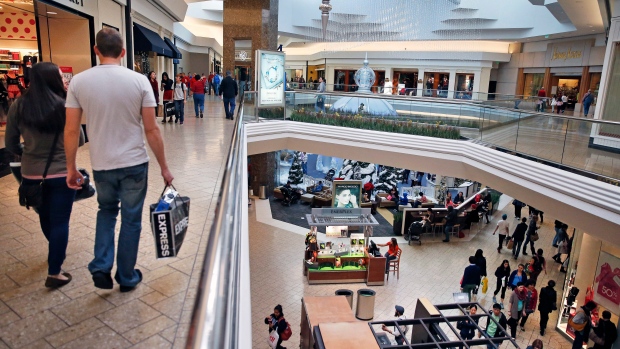Oct 31, 2019
U.S. consumer spending, jobless claims signal caution on economy
, Bloomberg News

Consumer outlays for goods and services, which account for about 70 per cent of gross domestic product, increased 0.2 per cent from the prior month after a 0.2 per cent August advance that was larger than previously estimated, Commerce Department data showed Thursday. The report also showed income gains matched projections, while the Fed’s preferred inflation gauge matched the slowest pace since 2016.
The figures suggest cooling momentum in Americans' spending, which is key to sustaining the record-long expansion -- and crucial for President Donald Trump's re-election prospects -- amid slowing payroll gains, trade tensions and weakness abroad. The data flesh out details on the economy after Wednesday's GDP report showed consumption grew more than forecast in the third quarter as business investment saw a steeper decline.
Fed Chairman Jerome Powell highlighted a strong job market, rising incomes and solid consumer confidence in his press conference Wednesday after the central bank cut interest rates for a third straight meeting and suggested it would pause. “The consumer is really driving growth” and hasn't shown signs of being dragged down by weakness in manufacturing, exports or business investment, he said.
Powell also cited low levels for initial unemployment claims as another positive sign, and they remain relatively low even with the latest increase. The Labor Department's latest report Thursday showed that such filings rose 5,000 to 218,000 in the week ended Oct. 26, compared with projections for 215,000. The four-week average, a less-volatile measure, declined to 214,750.
Elsewhere in Thursday's releases, the personal consumption expenditures price gauge, which the Fed officially targets for two per cent inflation, was little changed from the prior month and up 1.3 per cent from a year earlier.
Core Inflation
The core PCE price index, which excludes food and energy, was also little changed from the prior month, slightly below projections, and up 1.7 per cent from a year earlier. It increased at a 1.6 per cent annualized rate over the past three months compared with 2.5 per cent in the three months through August. Policy makers view the core gauge as a better indicator of underlying price trends.
After adjusting for the increase in inflation, spending rose 0.2 per cent from the prior month. The gain in September was driven by new motor vehicle purchases and health-care outlays, according to the report.
Consumer spending relies on wage gains. The Commerce Department’s report showed wages and salaries were little changed in September from the prior month. The strike by General Motors Co. workers that began in September reduced wages and salaries by $1.9 billion during the month, according to the report.
The personal saving rate rose to 8.3 per cent in September, the highest since March. Adjusted for inflation, disposable income rose 0.3 per cent following a 0.5 per cent gain.
The report also said special payments to farmers -- begun after the trade war with China hit the agriculture sector -- gave a “substantial” boost to farm proprietors' income in August and September.
Other data Thursday showed the Labor Department's employment cost index, a broad gauge monitored by the Fed, rose 0.7 per cent from the prior quarter, matching projections. The gauge increased 2.8 per cent from a year earlier, as wages and salaries for private workers increased three per cent for a third straight period. A tight labor market pushes companies to increase wages and benefits which could ultimately spur broader inflationary pressures.
Compensation gains were broad-based across sectors, with stronger increases in construction, finance and sales. The government’s quarterly ECI reading covers employer-paid taxes such as Social Security and Medicare along with other benefits.
The update follows Wednesday's release of third-quarter GDP, which showed growth held up at a 1.9 per cent annualized rate on unexpectedly strong consumer spending. The October jobs report Friday will give more detail on whether the labor market will keep propping up spending